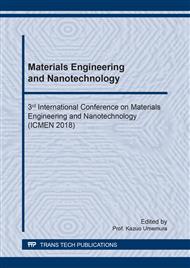p.171
p.178
p.187
p.192
p.198
p.207
p.214
p.219
p.224
Effect of Expansive Additive and Shrinkage Reducing Agent on Plastic Shrinkage of Steam-Cured Mortar
Abstract:
This research is part of the mortar’s plastic shrinkage study. Contents in this article is related to how the Expansive Additive (EX), Shrinkage Reducing Agent (SRA), and Fly Ash (FA) help to reduce and control the shrinkage and to compare the effectiveness of these substances used in the normal curing, i.e., at 30 °C and in the steam curing process by using the factorial design with 3 factors and to be divided into 2 levels. Factors to be studied are the amount of EX, SRA and FA replacement. The test of plastic shrinkage was conducted in accordance with the ASTM C1579-06 standard, placing the strain gauge 0.5 centimeters beneath the surface in the middle of the mold, recording the shrinkage rate starting from the initial setting time for 24 hours. The results showed that, in normal curing, the EX influences the expansion while, in steam curing, the EX and SRA significantly influences the expansion. To add the FA in high volume along with the EX significantly effects the expansion for both the normal and steam curing. Furthermore, the study model and equation for plastic shrinkage of mortar are presented in the form of factor proportion to be considered from the factorial design study basis.
Info:
Periodical:
Pages:
207-213
Citation:
Online since:
October 2018
Authors:
Price:
Сopyright:
© 2018 Trans Tech Publications Ltd. All Rights Reserved
Share:
Citation:


